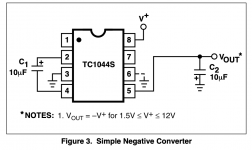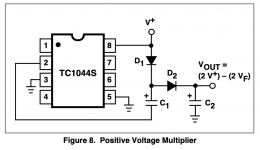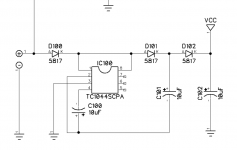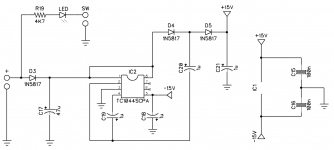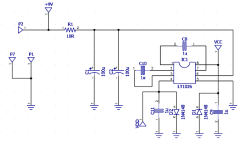benny_profane
Well-known member
For projects with a charge pump (e.g., TC1044SCPA) for (positive) voltage doubling, why is there a capacitor between pin 4 (CAP-) and pin 2 (CAP+) before connecting to another cap positioned on the cathode of the Schottky diode after pin 8 (V+). Unless there's a negative voltage conversion, is the cap between pins 2 and 4 necessary? Also, is pin 4 needed at all in voltage doubling applications? The data sheet shows it as an NC for multiplier use cases.
